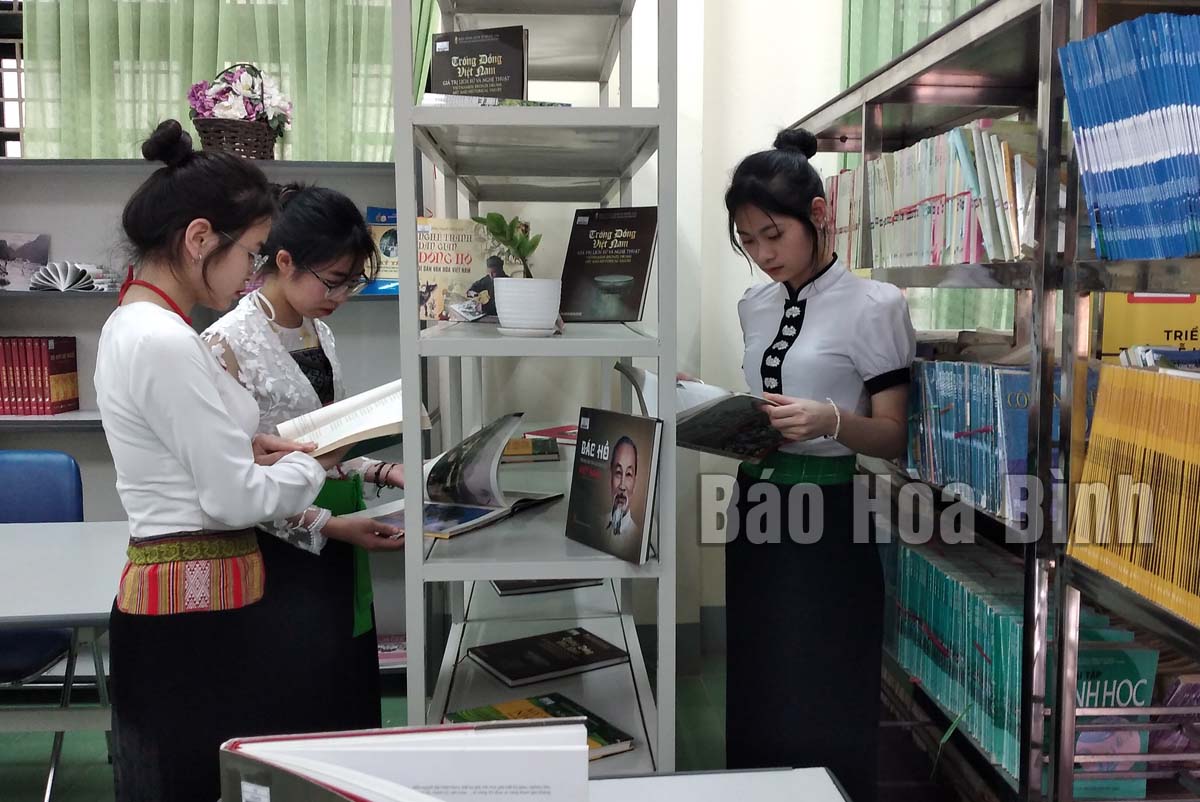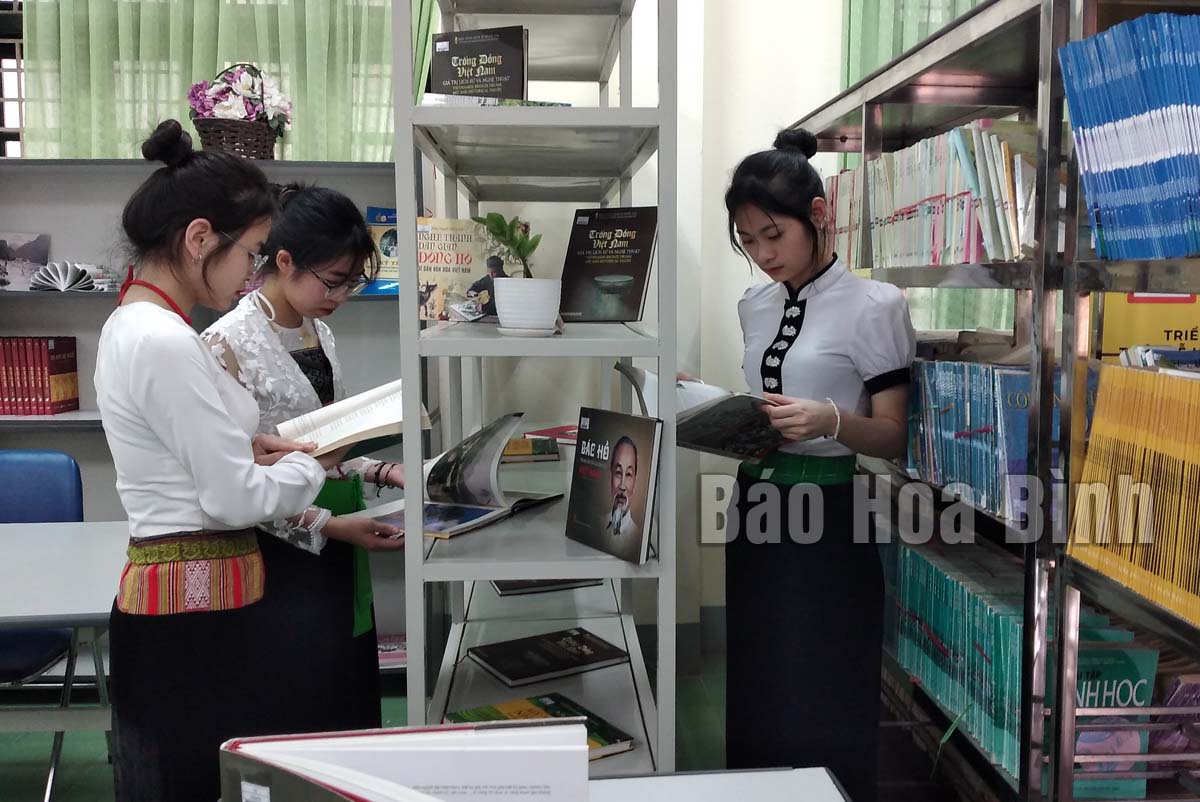
(HBO) – Many educational institutions in Hoa Binh province have organised practical activities to raise their students’ awareness of traditional culture, such as opening classes on Muong gongs, establishing clubs, and introducing folk games as extracurricular activities.
Students at the provincial boarding high school for
ethnic minorities are proud and confident wearing traditional dresses.
Since 2019, Quyet Thang High School in Lac Son
district has maintained a club to educate its students about preserving and
upholding Muong people’s traditional culture.
Dinh Thi Hao, Vice Principal of Quyet Thang High
School, said that since its establishment in October 2019, the 30-member club
has operated effectively and contributed significantly to improving the
school’s education quality comprehensively.
The boarding secondary and high school for
ethnic minorities in Cao Phong district has also focused on educating its
students about preserving traditional culture over the past years. During
extra-curricular activities and important events, its students wear their
traditional costumes. In particular, in October 2022, the school collaborated
with the district Office of Culture and Information in organising a class on
Muong gongs, with the participation of 50 students, and launched the Muong
Thang cultural preservation club.
According to leaders of the provincial
Department of Education and Training, such activities have contributed to
preserving and promoting traditional culture, helped young people understand
and love traditional cultural values, and created a healthy and friendly
learning environment, contributing to improving education quality in the
locality./.
With an increasingly vibrant and widespread emulation movement aimed at building cultured residential areas and cultured families, Yen Thuy District has been making steady progress toward improving both the material and spiritual well-being of its people, while fostering a civilized, prosperous, beautiful, and progressive community.
Once lacking recreational spaces and community facilities, Residential Group 2 in Quynh Lam Ward (Hoa Binh City) has recently received attention for the construction of a new, spacious, and fully equipped cultural house. The project followed the model of state support combined with public contributions in both labor and funding.
The "All people unite to build cultural life" movement, which has been effectively integrated with Kim Boi district’s socio-economic development goals, is fostering a lively spirit of emulation across local residential areas, hamlets, villages, public agencies, and enterprises. In addition, through the initiative, traditional cultural values are being preserved and promoted, while community solidarity and mutual support in poverty reduction and economic development are being strengthened.
A working delegation of the Hoa Binh provincial People’s Committee led by its Permanent Vice Chairman Nguyen Van Toan on June 11 inspected the progress of a project to build the Mo Muong Cultural Heritage Conservation Space linked to tourism services in Hop Phong commune, Cao Phong district.
Born and growing in the heroic land of Muong Dong, Dinh Thi Kieu Dung, a resident in Bo town of Kim Boi district, in her childhood was nurtured by the sweet lullabies of her grandmother and mother. These melodies deeply imprinted on her soul, becoming an inseparable part of her love for her ethnic group's culture. For over 20 years, this love for her hometown has driven Dung to research, collect, and pass down the cultural values of the Muong people to future generations.
In the final days of May, the Ethnic Art Troupe of Hoa Binh Province organized performances to serve the people in remote, mountainous, and particularly disadvantaged areas within the province. These were not just ordinary artistic shows, but they were the meaningful journeys aimed at spreading cultural values, enhancing the spiritual life of the people and contributing to the preservation of ethnic minority cultural identities.



